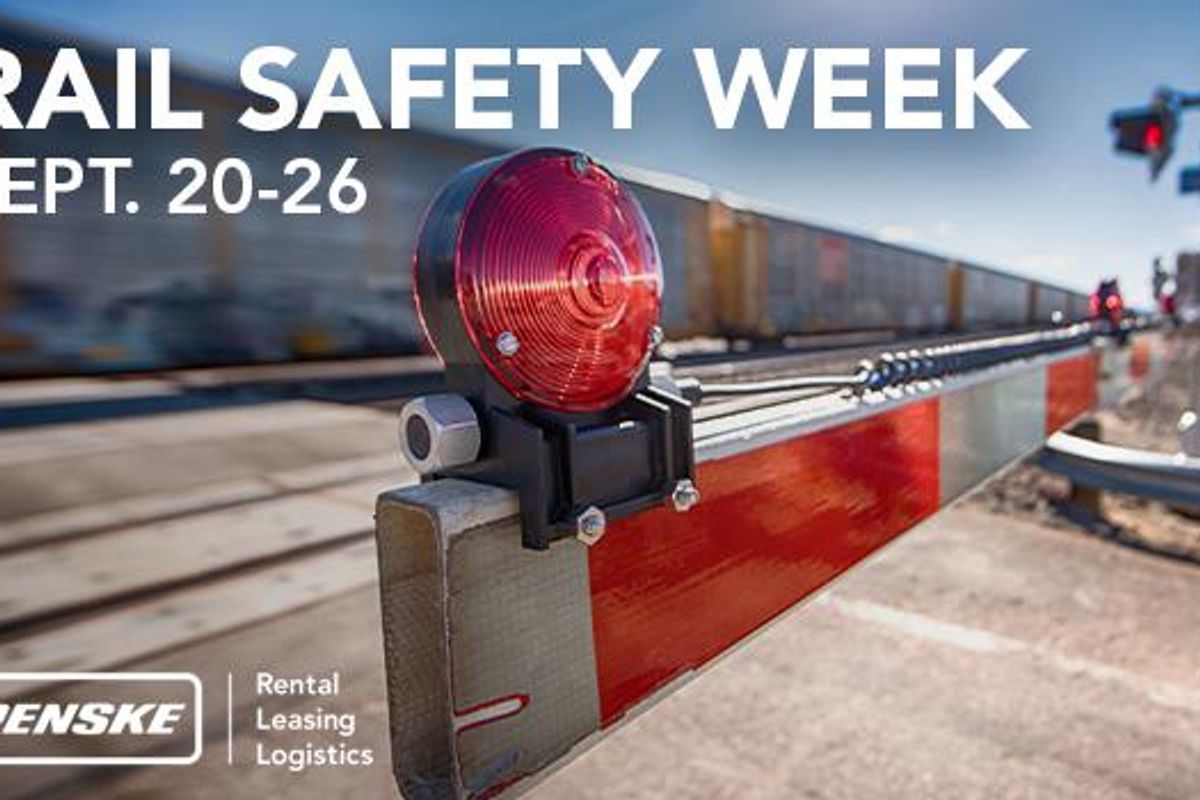
Rail Safety Week: Sept. 20-26
Making safe driving choices near railroad tracks is just as important as having good driving habits, so to help educate motorists about rail safety, Penske is highlighting Rail Safety Week from Sept. 20-26, launched in 2017 by Operation Lifesaver (OLI).
Observed in the U.S., Canada and Mexico, Rail Safety Week focuses on a different topic or theme each day, like safely crossing railroad tracks, helping law enforcement prevent trespassing and wearing red for rail safety.
Along with using Rail Safety Week to educate and raise awareness about rail safety, OLI offers these tips to help you stay safe whenever you're near the train tracks.
- Cross safely and legally – You should only cross train tracks at designated crossings and obey all posted warning signs. NEVER go around or try to beat a closing rail gate.
- Pay attention and practice patience – New trains are faster and quieter than old trains, so be sure to look both ways before crossing the track. It's also important to remember that trains can be pushed or pulled by a locomotive and can travel in either direction at any time.
- Check your space – When stopped at train tracks, be sure there are at least 15 ft. between the front and rear of your vehicle and the train tracks. The sides of a trains can also extend three feet over the steel rail, putting the safety zone for pedestrians beyond 3 ft.
- If you get stuck, get out and call for help – If your car gets stuck or stalls on the tracks, get everyone out of your vehicle immediately and call the number on the blue and white emergency sign posted nearby. Share your location and crossing number with the operator. If there is no sign, call 911.
- No trespassing – Never walk on train tracks. This is dangerous and illegal.
- Stay alert – While near train tracks, avoid distractions, do not wear headphones, and refrain from texting or talking on your phone.
Trains ALWAYS have the right of way – A moving train does not yield to pedestrians, bicyclists or emergency vehicles.
By John Moralis